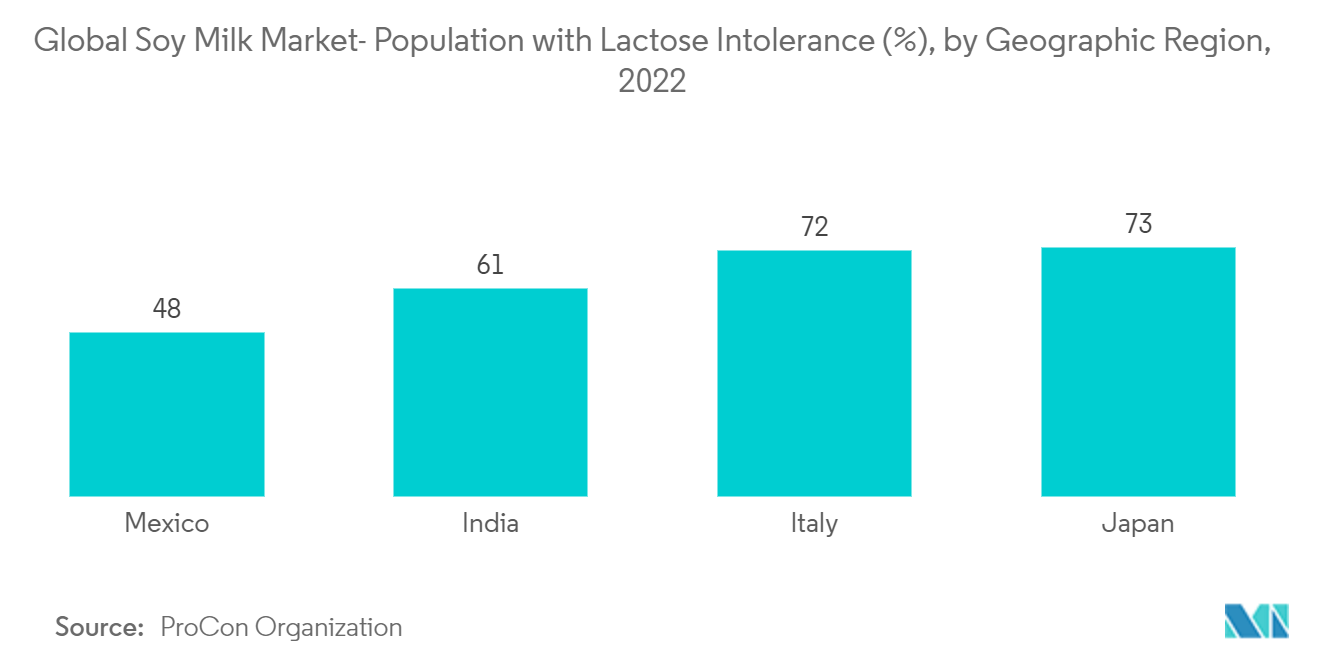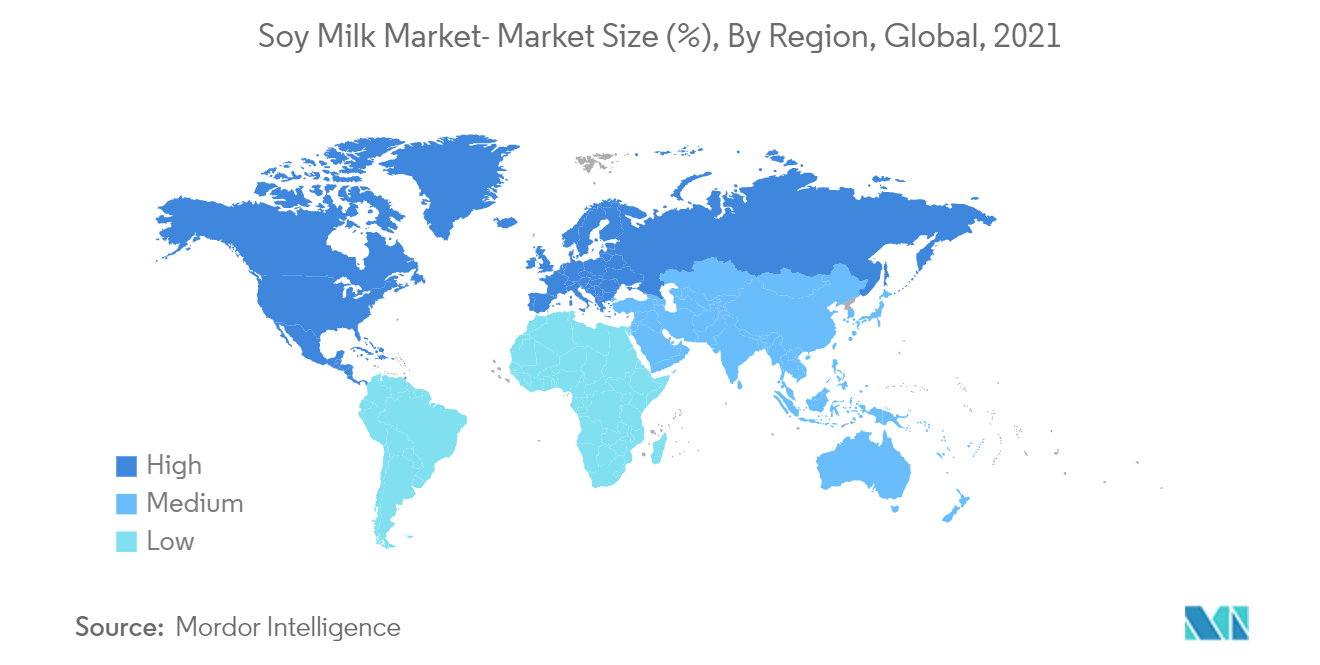Market Trends of Soy Milk Industry
This section covers the major market trends shaping the Soy Milk Market according to our research experts:
Increasing Prevalence of Lactose Intolerance
- The leading causes of giving up dairy products are the rising prevalence of lactose intolerance and allergies. Cow milk allergy is one of the most common food allergies in newborns and young children, especially in light of the food allergy statistic. For instance, according to ProCon Organization, 2022, 72% of Italians have lactose allergies. As a result, there is an increase in the country's demand for lactose-free milk products.
- Additionally, according to Agriculture and Agri-Food Canada, Brazil's free-from-product retail sales in 2021 totaled USD 848.1 million. Thus, as health consciousness grows, there is a growing demand for dairy-free products milk. Veganism is becoming more popular among customers, which is boosting market expansion around the world. Additionally, the rising number of product launches globally in the lactose-free dairy products category and its acceptance among consumers represents a substantial opportunity for dairy alternative manufacturers.
- The market is gaining popularity across Asian countries such as India, Thailand, Indonesia, and others. People spend on premium products with essential macronutrients and amino acids, good quality fatty acid profiles, vital minerals, vitamins, complex carbohydrates, and many phytochemicals. This, in turn, has provided lucrative opportunities for manufacturers to expand their footprints in such potential and promising markets.
- For instance, in 2021, Hershey India announced that it had developed Soft Plus, a plant protein drink made from soy that was created to meet the nutritional requirements of underprivileged children.

Asia-Pacific Emerges as the Fastest-growing Market
- The Asia-Pacific is the test-growing market as many countries like China, India, Japan, South Korea, and Hong Kong are the primary consumers of the product. The abundant duction of soybean in these countries is also driving consumption in the region. Also, in response to the increasing demand for vegan products and lactose-free dairy products in Asian countries, several strategic investments have been undertaken to push revenue generation in the region. For instance, in 2021, EFKO Group announced its plan to invest RUB 600 million in the venture to produce soy milk, producing a thousand tons of milk per month.
- In Asia-Pacific, consumers are increasingly looking for lactose-free dairy alternatives derived from plant sources, and the choice of products multiplying on the shelves satisfies health and wellness-orientated consumers' taste for novelty and variety. Also, plant-based beverages make up a promising category because of the traditional acceptance of soy.
- Additionally, the manufacturers' introduction of various flavors like vanilla, chocolate, and strawberry, among others, to mask the aftertaste of soy milk is also propelling the product demand among kids.
- Key manufacturers are investing in research and development to curb the aftertaste by introducing more flavors and selling the product in attractive packages via many distribution channels.
- For instance, in March 2022, ITC launched the new Aashirvaard Svasti' Easy Digest Milk' in the Indian market. The company claims that it is a lactose-free product formulated mainly for the lactose-intolerance population.


